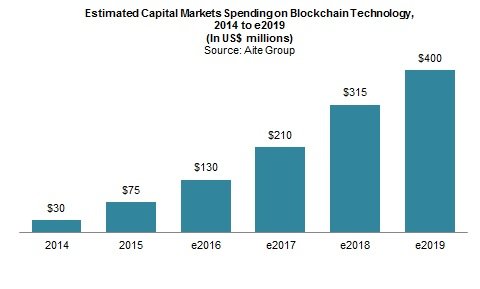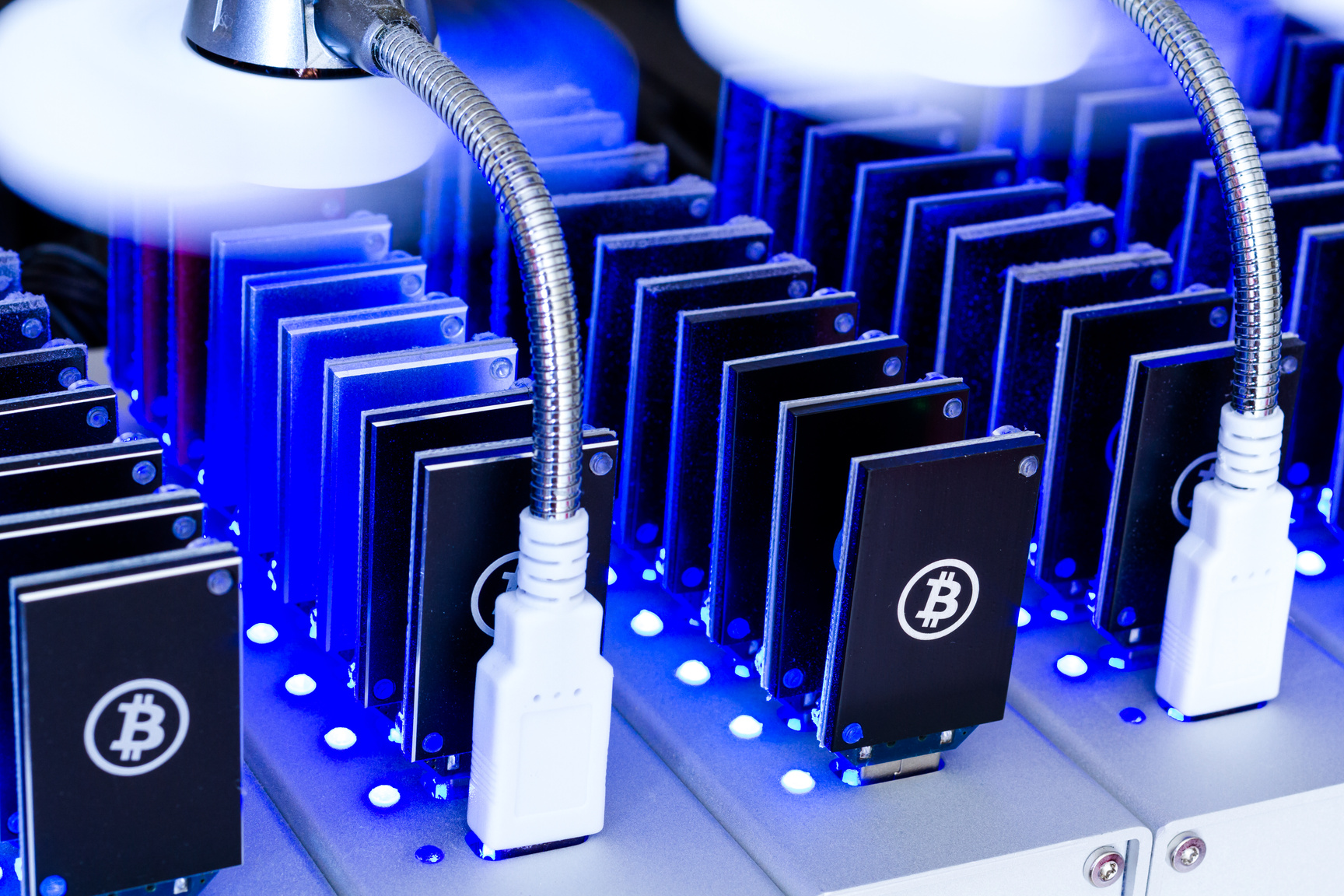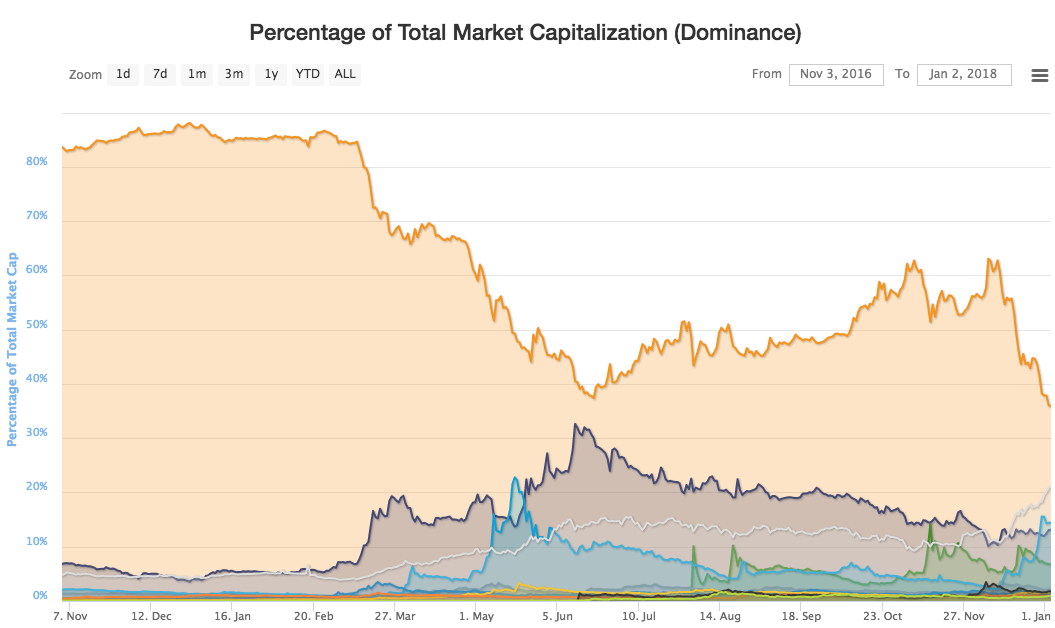Chapter 2 - Bitcoin and the "Bubble"
WHAT IS BITCOIN?
Bitcoin (BTC) is the most known example of implementation of the Blockchain technology in a practical way.
Despite the huge discussions surrounding it, and the disagreement about its potential and its regulation, Bitcoin still remains the "King of Cryptocurrencies".
While many people are still struggling to understand how Bitcoin exactly works, it really is as simple as it seems:
Bitcoin is a digital currency which is created and held electronically.
No one controls it.
Bitcoins aren’t printed, like “fiat” currencies (Dollars, Euros, etc.) –
they’re produced by people running computers all around the world.
It was created in 2008 by a software developer (or group) known as Satoshi Nakamoto as an electronic payment system based on mathematical proof.
The idea was to produce a currency which was independent of any central authority, transferable electronically – more or less instantly – with very low transaction fees.
It’s the first (and most famous) example of a growing phenomenon known as Cryptocurrency.
WHO “PRINTS” IT?
Short answer would be: Nobody.
This currency isn’t physically printed by a central bank or authority, it is created by a community of people that anyone can join. Bitcoins are “mined”, using computing power in a distributed network (a blockchain).
Since Bitcoin is “mined”, it means there’s only a limited supply of it: only 21 million coins can ever be created by miners.
However, these coins can be divided into – almost infinitely – smaller parts.
Around the world, people are using software programs that follow a mathematical formula to produce bitcoins. The mathematical formula is freely available, so that anyone can check it. The software is also open source, meaning that anyone can look at it to make sure that it does what it is supposed to.
WHY IS IT DIFFERENT?
Bitcoin is used to buy things electronically.
In that sense, it’s like conventional dollars, euros, or yen, which are also traded digitally.
However, Bitcoin’s most important characteristic, and the thing that makes it different to conventional money, is that it is decentralized, meaning that no single institution controls the bitcoin network.
Its main characteristics are:
It's decentralized
The Bitcoin network isn’t controlled by any central authority.
Every single computer mining coins and processing transactions is a part of the network, and all these machines work together. That means that there’s not a central entity which could manipulate the market (as the European Bank decided to do in Cyprus in early 2013).
And if a portion of the network goes offline for any reason, money will keep on flowing.It's anonymous
...almost.
Users can hold as many bitcoin addresses as they wish, and they aren’t linked to names, addresses, or other personally identifying information. Yet…It's 100% transparent
Bitcoin stores details of every single transaction that ever happened in the network in a huge version of a general ledger, called Blockchain.
The Blockchain tells all.
If you have a bitcoin address, anyone can tell how many bitcoins are stored in that address. They just don’t know who holds that address.Transaction fees are irrelevant
Your bank may charge you a 10€ fee for an international transfer.
Bitcoin doesn’t.It’s extremely fast
You can send money anywhere and it will arrive minutes later, depending on the number of computer connected to the network in that specific moment and on the number of transactions occurring simultaneously.
IS BITCOIN A “BUBBLE”?
While talking to most of my friends and family about Bitcoins, the only thing they seem interested about is if it’ll fail or not.
Although there are a number of different opinions about this specific topic, I personally like to tackle it from a wider perspective.
I obviously don’t know if Bitcoin is going to sink and neither if it’s going to exponentially grow, I’ll leave these answers to much smarter guys than I am. What I can say, however, is that I cannot picture - in any possible way - the Blockchain ceasing to exist.
It’s crucial to understand that Bitcoin has become just a project.
It could be the most successful of all, but it could also disappear in a couple of years, yet Blockchain definitely won’t.

It may seem totally out of place, and it most likely is, but I like to think of Bitcoin (and other digital currencies, for that matter) as of cars.
Now, anyone could suggest that one model or brand of cars will fail or succeed. Some of them will, inevitably, fail while others won’t. However, what anyone will agree on is that the “car” technology (a personal vehicle used to move faster than walking or horse-riding) will not disappear.
So, Bitcoin is a brand (say, Ford), while Blockchain is the “car” technology.
Is Ford going to disappear? Maybe, but cars are not, at least in this Century.
As a matter of fact, we could develop all kind of theories as if Bitcoin is ultimately going to fail, evolve or just keep growing indefinitely.
What I’ve never heard about is a theory suggesting Blockchain is going to fail.
To make a long story short, when people challenge me with the “bubble” question I always reply in the same way:
“Is Blockchain going to explode?”
FUTURE
There’s no doubt about the fact that the enthusiasm surrounding the Bitcoin phenomenon will carry-on spreading in 2018, as much as it’s indisputable that its price will continue to be fluctuate and that media will increasingly talk about it.
However, as everybody saw in late 2017, the preoccupation that its price fall of almost 50% represents a signal of the “bubble” popping. In addition to that, the absence of strong uptrend signals registered during the entirety of the first month of 2018 only strengthen the idea that the ultimate failure of Bitcoin is not only likely to occur but also that this may happen sooner than anyone anticipated.
To complete the picture, the dominance index of Bitcoin, which indicates its market share within the entirety of the Cryptocurrencies market, has continued to fall since early December 2017.
For many investors this trend has been a clear signal of the inevitable overtaking of Bitcoin by other Altcoins (meaning all Cryptocurrencies other than BTC) such as Ripple (XRP) and Ethereum (ETH).
Nevertheless, leaving aside extraorinary forecasts like Saxo Bank’s (whose analysts say that a Bitcoin will be worth more than 100.000 US$ within 2026), I strongly believe that BTC’s price will break its all-time-high of 20.000 US$ per coin within 2018, and these are four reasons why I think so.
Scarcity
Bitcoin’s root code is characterized by a maximum number of tokens which can ever be created: 21 million.
This threshold has already been reached by 80%, as today’s (01/26/2018) Coinmarketcap’s calculation says that 16,8 million coins have already been released.
Additionally, the procedure known as “mining” (which is how Bitcoins are created) has become more and more difficult to support both in terms of complexity and costs, leaving aside the dispute over the regulation of the phenomenon which led to the shut-down of one of the biggest “mining farms” in China.
Then, there’s one last element contributing to scarcity:
Bitcoin users need a “private key” in order to be able to actually use BTCs. According to a November 2017 study of Chainalysis the number of Bitcoins which will be forever-frozen due to the loss of these keys is currently set between 17% and 23%, which is a lot.
FOMO
Another important point of analysis deals with the so-called FOMO (a.k.a. Fear Of Missing Out), which has been crucial to Cryptocurrencies’ recent surge.
The high demand from investors which want to enter this new market has been underlined by a number of interviews, like the one released by Binance (a Hong Kong exchange among the biggest in the market) to Bloomberg where we learnt that they reached a peak of 240.000 new users in just one hour.
Despite Binance being considered an outlier in comparison to most other exchanges, with most of them experiencing technical problems which limited or suspended new users registrations, this remains a clear indication of the strong market demand.
In such a situation, it appears obvious that with the re-opening of these exchanges will follow a new boom of investments and money flow which will invest not only Bitcoin but Cryptocurrencies altogether.
Institutional investors
Back in December, the announcement that Bitcoins’ futures will be listed on Cboe and CME was interpreted as the first – real – contact point between the Cryptocurrency and regulated markets.
In particular, this had a major role in driving its price to the 20.000 mark.
Furthermore, within the first months of 2018, both Nasdaq and Tokyo Financial Exchange should launch their derivatives on Bitcoins, while a number of companies already presented an official request to SEC (the organism which controls financial markets in the USA) asking to approve Bitcoin-based Etf.
On top of that, Goldman Sachs declared that it will allow Cryptocurrencies trading within the end of June 2018.
“The trend is clear:
is undergoing a high exposition of Bitcoin to institutional investors”
Anatoliy Kniazev
Emerging Countries’ adoption
Bitcoin registered a tremendous success in Countries where local currencies have been heavily crippled by inflation, resulting in citizens losing trust in their Governments (like Zimbabwe or Venezuela).
According to a recent Goldman Sachs report, economies undergoing a crisis – such as the aforementioned – may even decide to completely substitute traditional currencies with digital ones.
NO, IT WON'T POP
To conclude the "bubble" dilemma, what I personally think is that it is not going to pop.
Market's macrotrends clearly suggest that the phenomenon has not even come close to reaching its climax, which means that the Cryptoeconomy as a whole will continue to experience growth in the short-term.
As a matter of fact, this is the only forecast we can confidently make about Bitcoins, trying to set a specific value and a date on such a volatile asset is just misleading as well as intellectually unacceptable.
The best (and only) thing we could do, to conclude, is to keep monitoring those events which may have a tangible and immediate impact on the market (regulations, discussions, investments), and make our decisions accordingly.


I think in case of BTC, transaction fees are unfortunately quite relevant :(